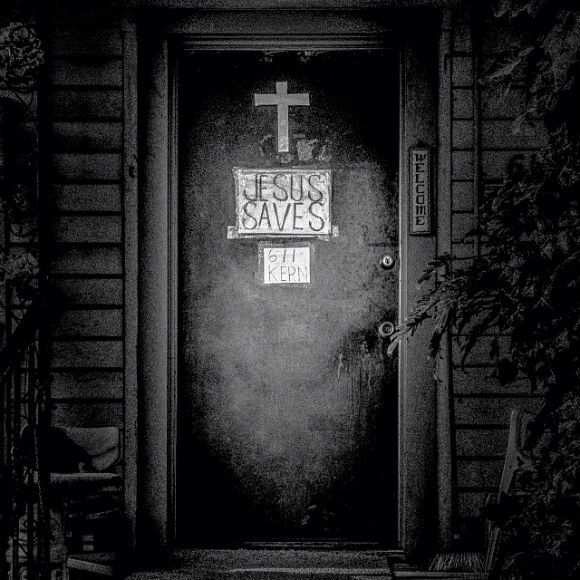Geography of Poverty: Matt Black Documents Downtrodden California

When we say a certain percentage of Americans can't find a particular place on a map, we're not just complaining about their ignorance of geography. Knowing where something is, being able to point at it -- this is a primary way of understanding a locale, seeing it not as an abstraction, but as a real place with real people.
Rural photographer Matt Black knows this phenomenon well. His Geography of Poverty series presents starkly compelling black-and-white photos from California's Central Valley, including Kern County. The project lives on Instagram, where he geotags each photo's location and often includes demographic info to help bring the message home. His account has over 65K followers.
"In a lot of ways, it's a condensed version of what I've been trying to do with photography from the beginning, which is to shoot the Central Valley and put these communities literally on the map," he says. "It's a very simple thing to say, 'Look, this is where it is,' but I think it connects things in a way that sometimes photography can struggle with, because photography is all about abstracting things and condensing things and making a very distinct visual statement, but sometimes that gets de-connected from reality."

Being able to see something on a map is a metaphor, but it's also a real feeling. "By linking the photo in this very concrete way, you say, 'Boom, here it is,'" he says. "'This is where Taft is, this is where Weedpatch is.'"
Taft and Weedpatch are both in Kern County, where 22.9 percent of people live below the poverty line. Weedpatch's 2,658 residents have it particularly rough, with 46.8 percent below the line.
In 2013 the United States Census Bureau set the poverty level at $11,888 for an individual and $23,834 for a four-person household.
These low income levels extend across the Central Valley.

"That's serious poverty with lifelong implications across the board," says Black. "And that's right here in California. Three hours away is Apple headquarters to the north. Three hours south is Los Angeles."
In Orange County, only 12.4 percent of people live below the poverty line, with the number creeping up to 17.8 percent in Los Angeles County. Santa Clara County, home to Apple headquarters, has 10.2 percent of residents below the line.
Black was born in the Central Valley, and he's seen the region's prospects dry up more and more in comparison to other places in California.
"The big, big, big change is water," he says, "and it's more than drought. It's been this steady, constant decline, how much water is available for agriculture... When I was a kid, there was just so much flood irrigating, literally just pouring water out on the ground, that you'd walk outside in the middle of summer, in July, and it'd be a hundred degrees outside, and it'd be humid from so much water evaporating. And that's gone."

Black has been documenting the region for 19 years, with photo essays appearing in The New Yorker, Mother Jones, and Vice, but his Instagram project might be bringing more attention to the issue than any traditional media outlet ever could.
The success broke through some of his initial skepticism with the medium: "When you think of Instagram, what you think of is food and puppies and kittens and whatever else. How are images of poverty going to be received on this?"
Judging from the interaction on his Instagram account and the attention the photos have received, the answer is definitely better than expected.
"It says something to me about humanity that people are willing to engage with this stuff in that way," he says. "Serious issues do have a future in this digital space we're creating."
The Los Angeles Center for Photography is hosting "An Evening With Matt Black" on February 26. You can follow his Geography of Poverty series on Instagram.


Dig this story? Sign up for our newsletter to get unique arts & culture stories and videos from across Southern California in your inbox. Also, follow Artbound on Facebook, Twitter, and Youtube.